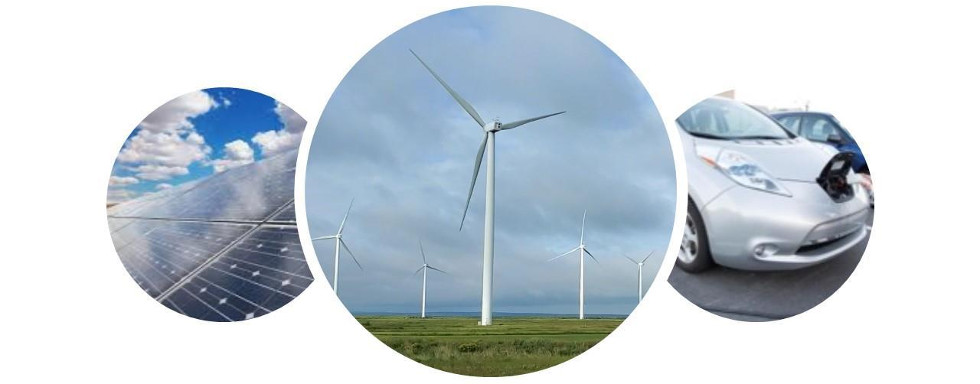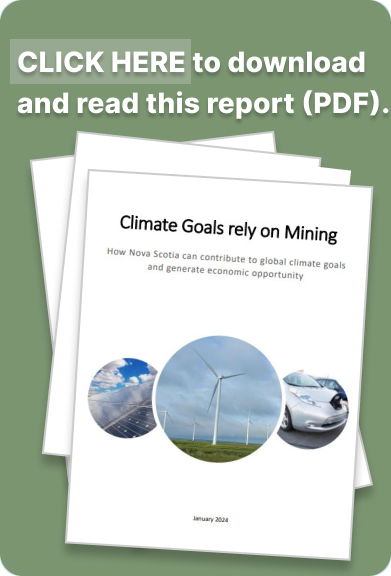
Climate goals rely on mining.
That might sound paradoxical to some, but the reality is green technologies like electric vehicles, wind turbines and solar panels are largely made of minerals. The International Energy Agency (IEA) estimates that supply of critical minerals must increase sixfold to achieve net zero emissions by 2050.
In fact, hundreds of new mines are needed – quickly – to supply the minerals necessary for clean energy. Many reports by global experts predict there will be mineral shortages because there simply are not enough mines in the world to meet the demand.
Nova Scotia has had many mines that produced what we now call “critical minerals” – minerals needed for climate goals and for which there are supply concerns – including copper, tin, zinc, graphite, antimony, manganese and molybdenum. The province also has potential for critical minerals such as lithium, rare earth elements, indium, uranium and titanium.
The global rush to source critical minerals creates an extraordinary economic opportunity for places like Nova Scotia that have the potential to provide them. The province can contribute to global supply while also generating jobs and government revenues to help pay for programs like health and education.
The Government of Nova Scotia should do everything it can to help the province’s mining industry find and develop critical mineral deposits.
Unfortunately, a series of long-standing policy issues discourage investment in Nova Scotia’s critical minerals potential, and harm the industry in general. Resolving these issues would facilitate economic development and help Nova Scotia contribute to critical mineral supply. For example, the provincial government should:
Governments, like Nova Scotia’s, that set ambitious climate goals also need to work with their mining industries to help achieve those goals. To date, the Government of Nova Scotia has not made any policy changes to support the critical minerals sector and its draft critical minerals strategy contains no specific targets or actions.
If we do not extract minerals in stringently regulated democracies like Canada, more mining will be done in countries that do not take proper care of the environment or worker safety. In other words, blocking a mining project in Canada does nothing to protect the environment – it just offshores impacts to a jurisdiction where they will likely be worse. We need to do more mining here, and less in countries that do not share our values.
Nova Scotia has the potential to supply a number of critical minerals. The provincial government needs to support that effort by cutting red tape, removing policy obstacles and working with the mining industry to attract interest in the province’s amazing geology.
- Fund Minerals Play Fairway, a proposed airborne geophysical exploration program that would help identify areas with potential for critical minerals and increase our understanding of the province’s geology.
- Lift the four-decade-old ban on uranium exploration and mining. Natural Resources Canada says uranium is a critical mineral because it is the key nuclear fuel and nuclear provides vast quantities of baseload energy without generating any greenhouse gas emissions. Almost two dozen countries, including Canada, have committed to tripling nuclear energy as part of achieving Net Zero.
- Reform permitting and cut red tape to help expedite mineral exploration and development. There is a growing global consensus that permitting for new mines needs to be reformed to help achieve climate goals because it takes, on average, 17 years to get from mineral deposit discovery to actual mining. The IEA argues for “a cut in permitting times to just one year – the minimum time required to prepare a thorough environmental assessment and ensure adequate safeguards.”
- Add some sensible flexibility to protected areas policy. Protected areas overlap or are in close proximity to over 400 known critical mineral occurrences in Nova Scotia, which hinders or outright prevents exploration and extraction of materials that are essential to meeting climate goals. This creates a situation in which two environmental goals – land conservation and climate change – are at odds with each other. Flexibility in protected areas policy would solve this problem.
- Use tax and royalty policy to make Nova Scotia a more attractive place to invest for mineral exploration and development. Other provinces support their mining industries more than Nova Scotia does, and many are taking significant additional steps to attract investment in their critical minerals. Nova Scotia is not competitive with other Canadian provinces in this regard.
Governments, like Nova Scotia’s, that set ambitious climate goals also need to work with their mining industries to help achieve those goals. To date, the Government of Nova Scotia has not made any policy changes to support the critical minerals sector and its draft critical minerals strategy contains no specific targets or actions.
If we do not extract minerals in stringently regulated democracies like Canada, more mining will be done in countries that do not take proper care of the environment or worker safety. In other words, blocking a mining project in Canada does nothing to protect the environment – it just offshores impacts to a jurisdiction where they will likely be worse. We need to do more mining here, and less in countries that do not share our values.
Nova Scotia has the potential to supply a number of critical minerals. The provincial government needs to support that effort by cutting red tape, removing policy obstacles and working with the mining industry to attract interest in the province’s amazing geology.





